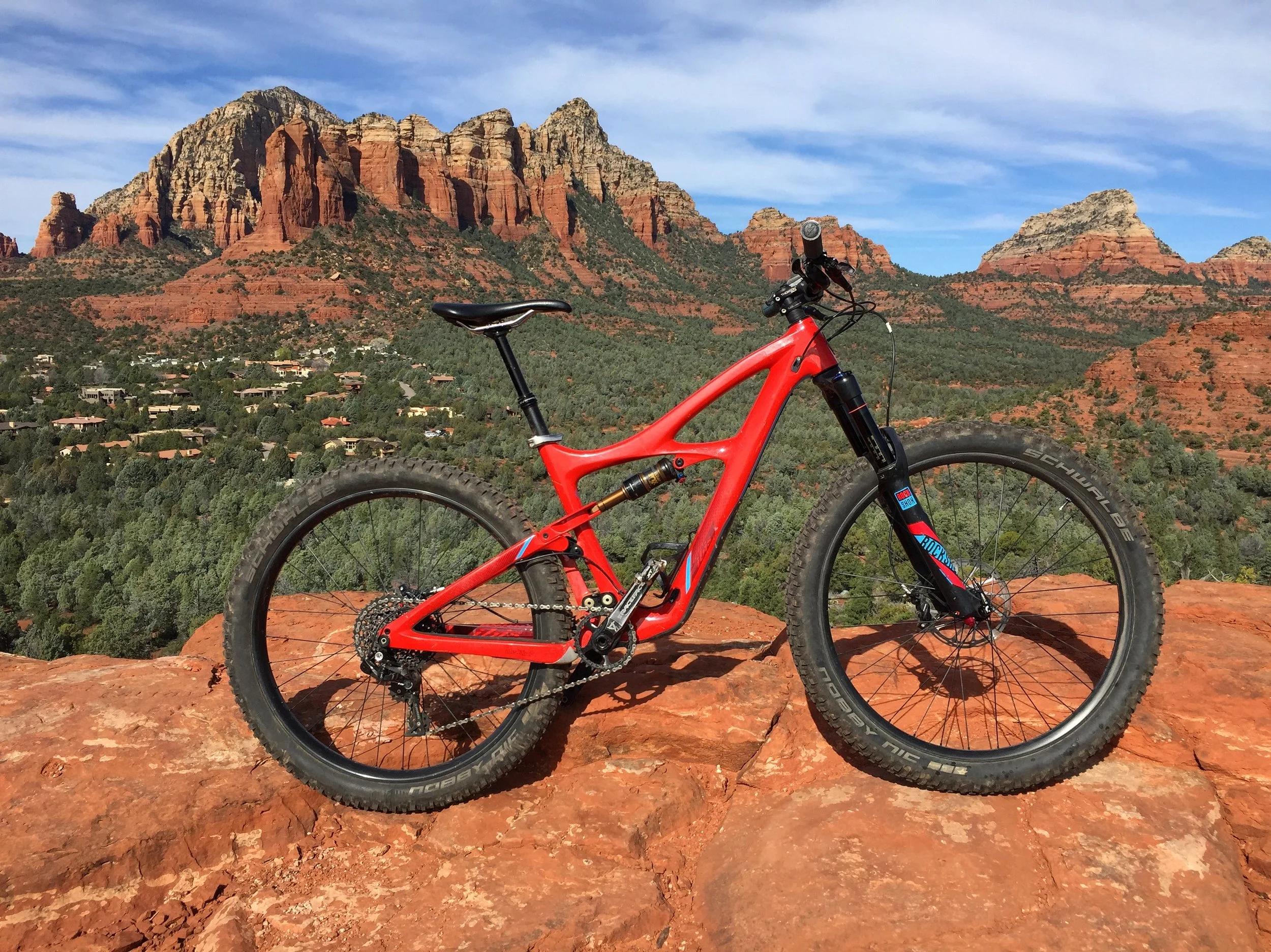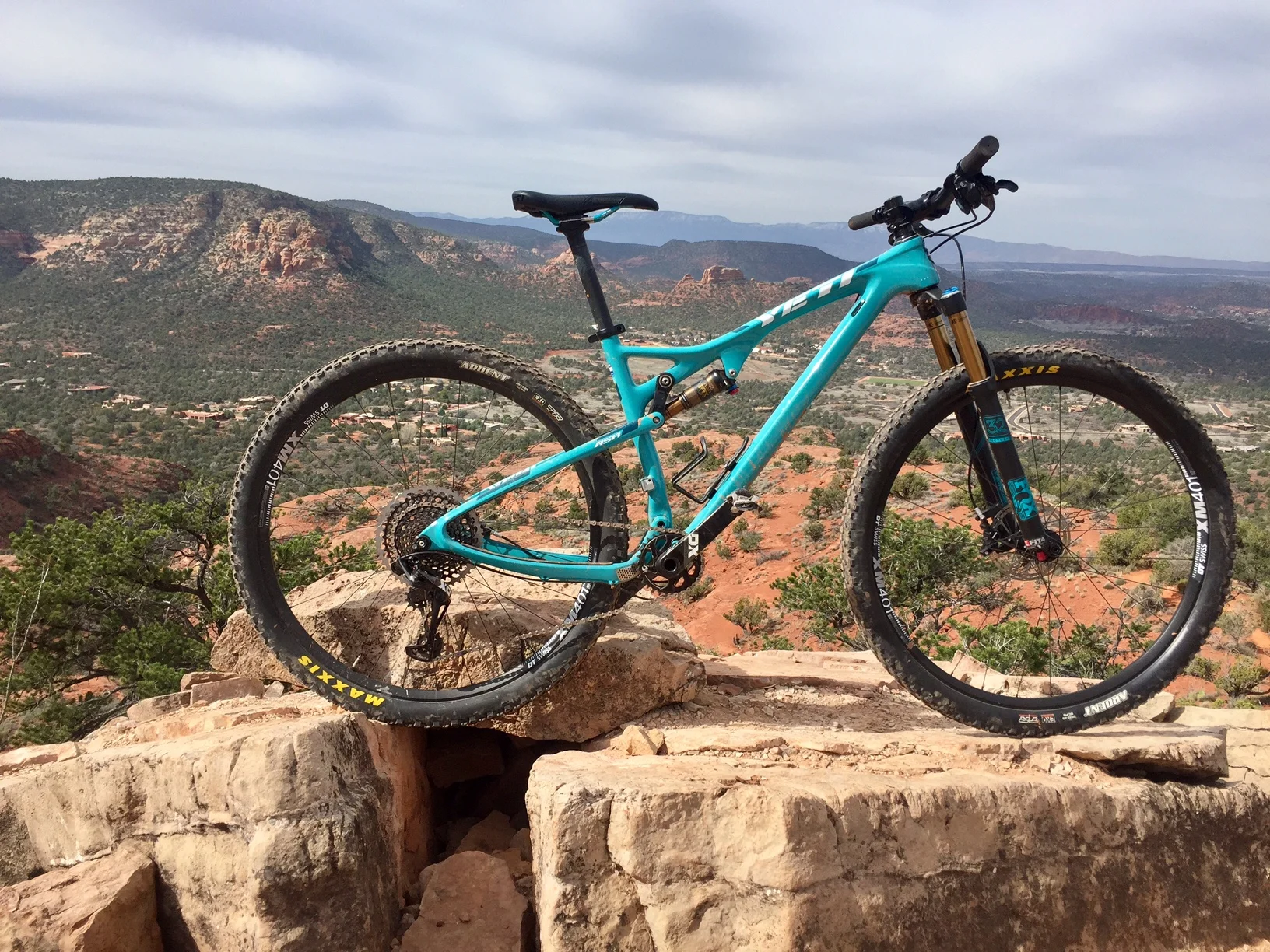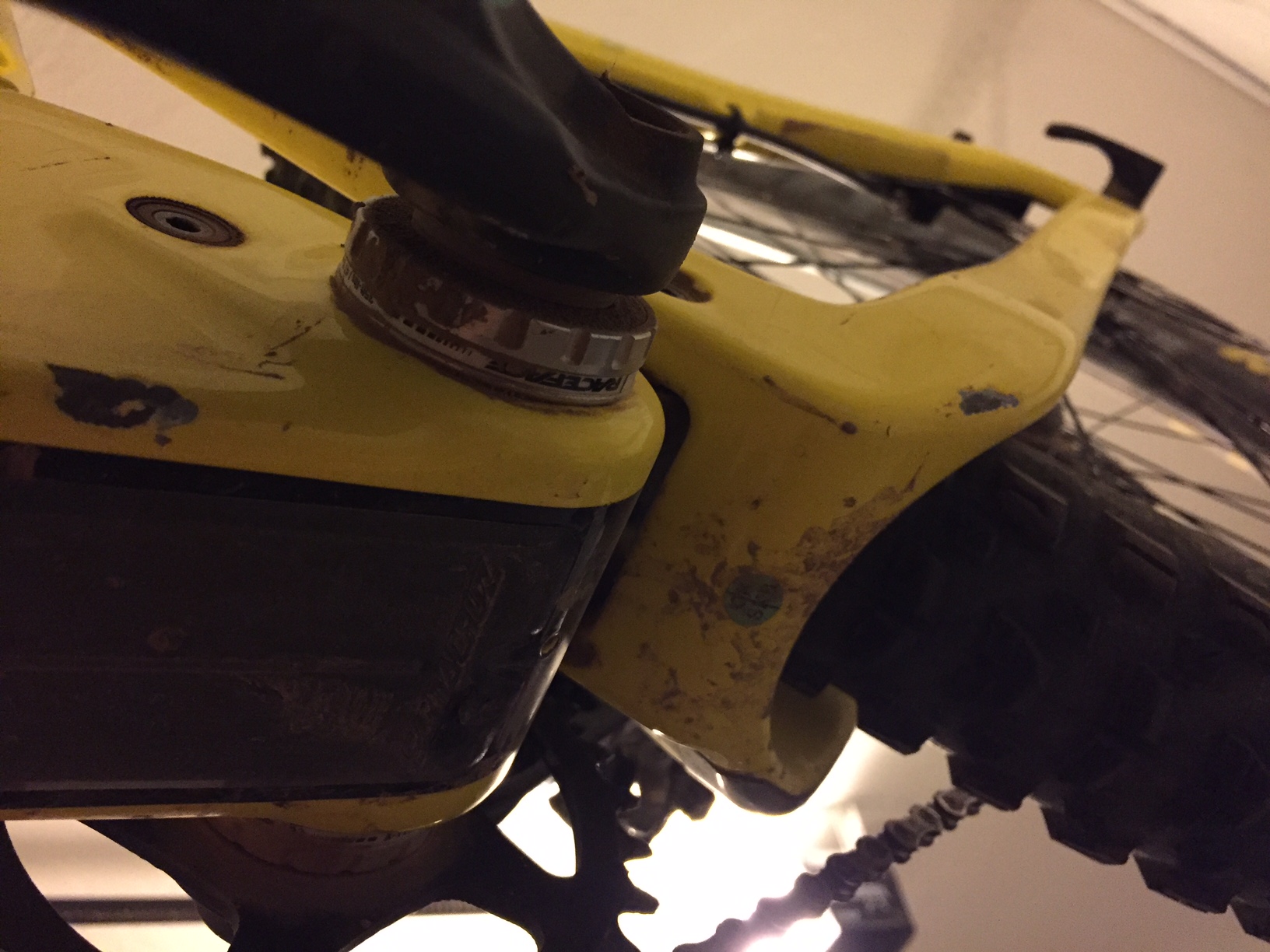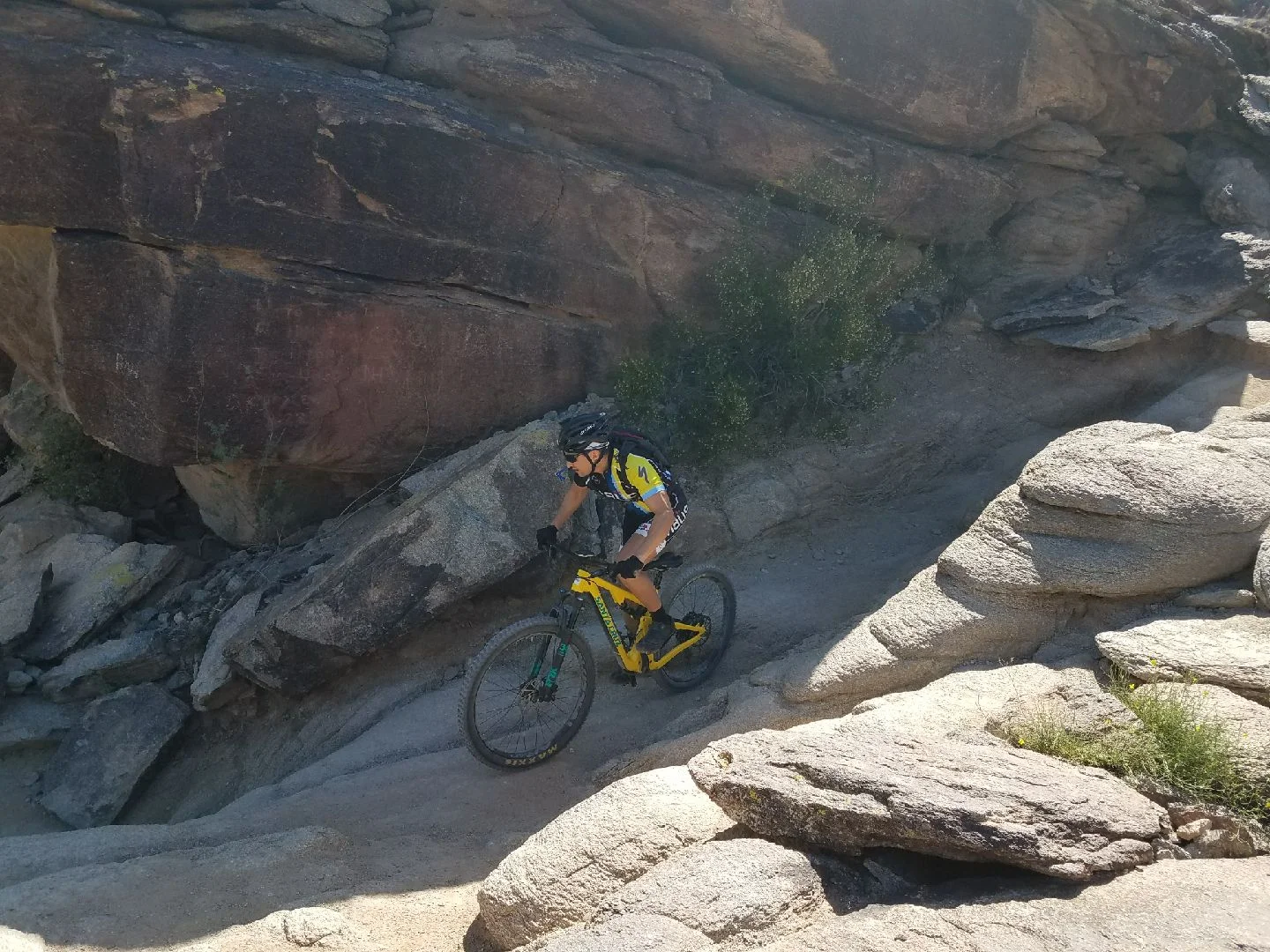Bringing some closure to parts one, two, and three of my time spent at Sedona Mountain Bike Festival, and coming full circle to about a year ago when I purchased a new mountain bike, this post summarizes the main thoughts and takeaways about current mountain bikes as whole. I greatly appreciate all of the support and messages received so far on the review of the Santa Cruz Tallboy 3 Plus bike, so I'm hoping this can shed any additional light needed for anyone in the purchasing process.
Wheel Size
This seems to be the biggest question in the demographic of bikes I've been looking at, do you want a 29er, 27.5", 27.5+? This is certainly a big decision as it dictates which bikes remain options, and they do all feel different. And when I was first racking my brain deciding which way to go, I finally realized this makes the switchable bikes very appealing because they do feel like a different bike with a different set of wheels. For the price of an extra wheel set, you can effectively have a different bike for different conditions, different riding style, a different kind of fun. This makes the choices like the Santa Cruz Hightower and Tallboy, Ibis Mojo 3, Pivot Mach 429 Trail, and others really safe bets.
And since I kind of started in on the debate over jumping into the deep end with a plus size bike, riding other bikes of various wheel sizes reaffirmed that 27.5+ is my favorite for the type of riding I'm doing these days. I don't notice much a of weight or agility trade off versus a 29er, especially when the 29ers are in the chunkier rubber, like on the Evil The Following. And the bikes that show an apparent difference, like a Yeti ASR, there's also a weight and amount of travel factor that comes into play. But for general trail riding, when comparing say 27.5 x 2.8" to 29 x 2.3 or 2.4" setups, I don't notice much of a difference in efficiency or speed at all, and really enjoy the added confidence in cornering and huge amounts of grip on tap.
And as for the smaller wheels, the standard 27.5's, there are some really great 27.5 bikes out there, but as a whole they are probably not the way I would go, if I were to switch wheel sizes. A huge part of that has to do with where you ride and the conditions of your trails, but for rocky Arizona, I prefer the larger sizes.
Travel
The amount of travel on tap from these various bikes might be one of the most deceiving factors. When I was initially buying, 6" bikes sounded like so much travel, too much even. But with how good rear suspension and the geometries of the bikes are these days, you don't notice a huge difference on all but the biggest hits, especially in rear travel. Longer forks are providing enough travel to soak up most drops making them roll-able. And efficient rear end setups are making 5 inches of rear travel pedal just fine, so there isn't as much of a trade-off these days.
One of my good friends that came off the same Specialized Epic I did and went to a Hightower, and I are consistently amazed by the stuff we are able to ride with a little more travel and more trail friendly geometry. What makes that all worth it is that neither of us feel like we are giving up enough in pedaling efficiency that would make us want to go back. The Epic was a very snappy and efficient bike, and it went like snot, but at the end of the day, these bikes are just more fun and versatile for the types of riding we are doing.
I think if I were to go out on a limb and call out an ideal setup, it would be 130 mm in the front and 120 mm in the rear in a switchable wheel size bike. And to my point about suspension being so good, I think anything with 10 mm more front and rear would be just as good.
Components
All I have to say here is that SRAM Eagle is the real deal. I've ridden it on a couple of bike now and am amazed by how well it shifts and love the it seems to get rid of any awkward gaps in the 1x11 setups. It's certainly not a cheap date right now, but this will be great when it starts trickling down the product line, making it more accessible. As someone that likes to spin an easier gear, rather than mash a harder one, I appreciated the dinner plate sized large cog and was very thankful when I had it. I don't know if anyone knows what "perfect" shifting feels like, but this has to be pretty close. The tactile feedback is crisp, but not unrefined, and the lever feel and weight is buttery smooth, requiring the amount of effort that seams appropriate.
The other takeaway on components that was surprising to me is despite preferring Shimano components on the road, I definitely prefer SRAM on the mountain. Maybe it's because that's what I've ridden the most, but lever feel and weight is more satisfying, providing more positive feedback, and where everything is feels more natural. I like the crisp shifting in contrast to some of the Shimano groups that almost felt vague at times, almost likely they were lacking any "soul", if you can believe that. They just felt too mechanical and dead.
Plus Size Tires
There aren't a ton of plus size tires in the market, and most of the bikes seems to come with the few most common, but I did want to highlight two that I've ridden a fair amount that were really good. My Santa Cruz Tallboy 3 came with Maxxis Rekon+ and with about 8 months of continuous riding in varying conditions and terrain, I can confidently say that I love these tires. With the entry level dual compound version in the rear, and the the lighter 3C Maxx Terra Exo in the front, these tires always seem to roll well, corner well, have the right amount of grip, without feeling like I have too much tire. The tires have held up admirably against Arizona's jagged rocks and my occasionally inability to avoid them, without the slightest of punctures or leaking (knock on wood).
The other tire that I've ridden a few times on a couple of different bikes is the Schwalbe Nobby Nic 2.80" width. Depending on the casing version, Schwalbe's, in general, can tend to be more prone to cutting, but also lighter, but these felt and worked great. With a similar shape and performance to the Maxxis Rekon+ there's not much to complain about. They held up well, weren't bouncy or flexy, and had predictable levels of grip.
One interesting observation is how huge 27.5 x 3.0 tires look and feel. I don't think 2.8's look big or feel bulky, but the few times I've ridden a bike equipped with 3.0's, the bikes seemed more fat than plus, and like they had too much tire. It's amazing the leap, and I'm sure there are some riding styles and terrains that suit the wider rubber, but I really do feel like 2.8 is the sweet spot. The 3.0's Maxxis Chronicle tires on the Devinci Marshall felt bulky, sluggish, and clumsy. They also seemed to have a little more sidewall flex which can cause the unwanted roll or flop of the sidewall in a hard corner.
No matter what rubber you choose though, I do feel very strongly that really dialing in the tire pressure with a low pressure specific gauge is crucial. I personally really like the simplicity of this Meiser Gauge, that has everything you need with a bleed valve and nothing you don't with an analog display. I would also recommend carrying some tubeless plugs like these from Genuine Innovations. The plugs are easy to use and perfect for getting home or salvaging a tire from replacement at the higher cost of the plus size tires.
Protection
Let's talk a bit about protection, you can never really be too safe. With the lower bottom bracket heights of many of the new mountain bikes, frame vulnerability seems greater than ever. And nothing is worse than scraping up a shiny new bike. I really wish I had made the investment in a custom cut kit like this one from InvisiFrame, and I still think I'm going to, to avoid further damage. But as you can see, the lower linkage and bottom bracket area can be pretty exposed when these bikes are increasing your confidence to try new obstacles.
The less expensive way to go, provided you have the patience, is use to helicopter tape like this and lay it up yourself. My bike came with a sheet of clear vinyl sections for where the cable housing touches the frame that I tried to apply to the BB area, and all I can say is that the amount of shaping of the tubes can make it very difficult to get something that looks clean and adheres well, making me think a pre-cut option might be the way to go.
Would I do it all again?
The last 10-12 months have been a lot of fun. I've been lucky enough to put good, full rides in on about 13 full suspension, 4 - 6" travel, trail oriented all rounder mountain bikes in various wheel/tire sizes, and it's a great time to be shopping for a bike because there are so many good ones available. I think I can confidently say there are multiple right choices, and multiple bikes I could easily be very happy with, including my own. I'm very happy with the Santa Cruz Tallboy 3, and if I were to buy a different bike or do it again, I would likely end up in the same or a very similar place.
I am really enjoying ridding a 27.5+ setup, and feel that the added grip, confidence, and monster truck like roll-ability offset any possible sacrifices in weight or how nimble the bike may be / feel. I would be interested in adding a set of 29" wheels to mix it up on the Tallboy, but overall I just feel like the added confidence I have when cornering and the way the plus tires behave has resulted in more fun on the bike.
So yes, I would absolutely buy the Tallboy 3 again. But I think I or anyone else could also have a great time on bikes like the Ibis Mojo 3, Pivot Mach 429 Trail, Santa Cruz Hightower, and many others.
Thank you for reading along, and thanks to everyone who has reached out with questions or comments. If you have any questions or suggestions on what you would like me to elaborate on, please don't hesitate to send me an e-mail at meticulist.net (at) gmail.com, comment below, or contact me here. Happy trails.






